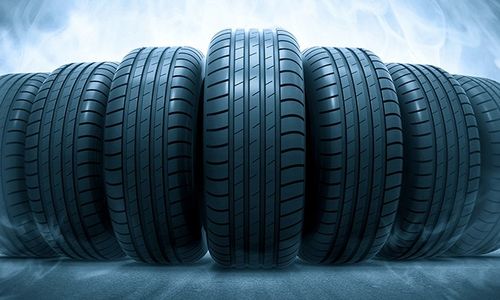A. Rubber is one of the most important products to come out of the rainforest. Though indigenous rainforest dwellers of South America have been using rubber for generations, it was not until 1839 that rubber had its first practical application in the industrial world. In that year, Charles Goodyear accidentally dropped rubber and sulfur on a hot stovetop, causing it to char like leather yet remain plastic and elastic. Vulcanization, a refined version of this process, transformed the white sap from the bark of the Hevea tree into an essential product for the industrial age.
B. With the invention of the automobile in the late 19th century, the rubber boom began. 3As demand for rubber soared small dumpy river towns like Manaus, Brazil, were transformed over night into bustling centers of commerce. Manaus, situated on the Amazon where it is met by Rio Negro, became the opulent heart of the rubber trade. Within a few short years Manaus had Brazil’s first telephone system, 161 miles of streetcar tracks, and an electric grid for a city of a million, though it had a population of only 40,000.
C. The opulence of the rubber barons could only be exceeded by their brutality. Wild Hevea trees, like all primary rainforest trees, are widely dispersed, with an adaptation that protects species from the South American leaf blight which easily spreads through and decimates plantations. 6Thus, to make a profit, barons had to acquire control over huge tracts of land. Most did so by hiring their own private armies to defend their claims, acquire new land, and capture native laborers. As the Indians died, production soared.
D. The Brazilian rubber market was crushed by the rapid development of the more efficient rubber plantations of Southeast Asia. However, the prospects of developing plantations did not begin on a high note. 5Rubber seeds, rich with oil and latex, could not survive the long Atlantic journey from Brazil. Finally, in 1876, an English planter, Henry Wickham, collected 70,000 seeds and shipped them to England. 2800 of the seeds germinated and were sent to Colombo, Ceylon (present day Sri Lanka). After several false starts, including one planter in northern Borneo who felled his plantations after finding no rubber balls hanging from the branches, the prospects were grim. One major obstacle was the success of tea and coffee, which gave planters no reason to try an untested crop.
E. 4Finally in 1895, Henry Ridley, head of Singapore’s botanical garden, persuaded two coffee growers to plant two acres of Hevea trees. Twelve years later more than 300,000 ha of rubber grew in plantations in Ceylon and Malaya. New innovations increased efficiency and production doubled every two years. Rubber could be produced at only a fraction of the cost of collecting wild rubber in Brazil. By 1910, Brazilian production had fallen to 50%. In 1914, Brazil’s market share was down around 30%; 1918 - 20%, and 1940 - 1.3%.
G. 8However the situation changed drastically with the OPEC oil embargo of 1973 which doubled the price of synthetic rubber and made oil consumers more conscious of their gas mileage. 1-9The concern over gas mileage brought unexpected threat to the synthetic market: the wide-spread adoption of the radial tire. The radial tire replaced the simple bias tires (which made up 90% of the market only 5 year earlier) and within a few years virtually all cars were rolling in radials. 10Synthetic rubber did not have the strength for radials; only natural rubber could provide the required sturdiness. By 1993 natural rubber had recaptured 39% of the domestic market. Today nearly 50% of every auto tire and 100% of all aircraft tires are made of natural rubber. 85% of this rubber is imported from 11Southeast Asia meaning that the US is highly susceptible to disruptions caused by an embargo or worse, the unintentional or intentional introduction of leaf blight into plantations. 12None of the trees in plantations across Southeast Asia has resistance to blight, so a single act to biological terrorism, the systematic introduction of fungal spores so small as to be readily concealed in a shoe, could wipe out the plantations, shutting down production of natural rubber for at least a decade. 13It is difficult to think of any other raw material that is as vital and vulnerable.

![[Recent Tests- VOL] - A Brief Introduction to Pepper](https://static.helik.app/reading/2250f746-b094-476e-a25e-a47a21c27072)
![[Recent Tests- VOL] - Classifying societies](https://static.helik.app/reading/e93c3418-dcc0-4095-96eb-ee3951a68289)
![[Recent Tests- VOL] - The Blockbuster Phenomenon](https://static.helik.app/reading/2f76f74f-39e0-45b8-8c43-ff5bac22ee2b)
![[Recent Tests- VOL] - Saving the Bittern](https://static.helik.app/reading/4f428d53-643b-477c-afb1-d6f0cee2e8fb)
![[Recent Tests- VOL] - Ambergris](https://static.helik.app/reading/b6be70ec-fa99-41ea-876e-4058cfbab0cd)
![[Recent Tests- VOL] - Developmental Tasks of Normal Adolescence](https://static.helik.app/reading/69287e43-4020-4dea-9c3e-54bc2c48bab8)
![[Recent Tests- VOL] - Corporate Social Responsibility](https://static.helik.app/reading/4034faff-df5e-4727-af9c-fe17355ea7eb)
![[Recent Tests- VOL] - Amateur Naturalists](https://static.helik.app/reading/9177a84f-590c-4379-b00a-5c18b76c217d)